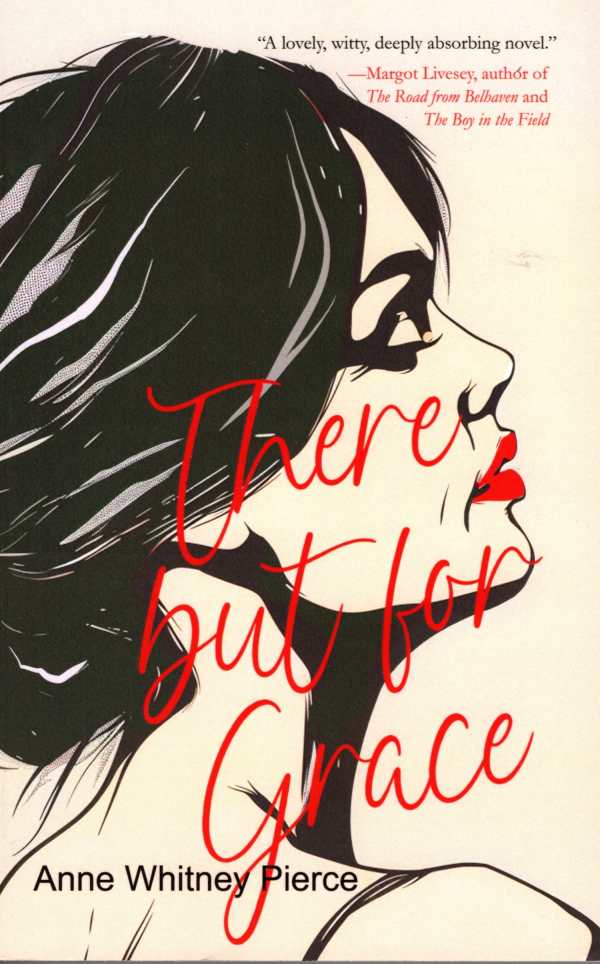There but for Grace
A funny, heartbreaking, and revelatory novel, There but for Grace celebrates new lovers, old friends, and personal evolution.
In Anne Whitney Pierce’s romantic novel There but for Grace, a divorced woman is ready to test her midlife boundaries.
With her twins in college and her marriage of twenty-seven years over, Grace—whose comfortable home seems to be a metaphor for her sense of self, her motherhood, and her marriage, with her relationship to it shifting as she grows—is ready to shed her self-proclaimed WASPy background and embrace a more adventurous life. As her relationships change, she gets a new job to support herself and finds fresh ways to make herself feel attractive. A stunted novelist who’s too scared to write, she also contends with the challenges of her aging, querulous mother and her guilty sister. In pursuit of her next chapter, she investigates the local nightlife at her neighborhood bars, leading to funny, heartbreaking, and revelatory chaos amid new lovers, old friends, and her personal evolution.
The novel’s broad swath of characters all have rich backstories, even those who play mere supporting roles. They move in and out of Grace’s orbit in a fluid manner, contributing comic relief or furthering her attempts to understand herself. For example, Grace’s best friend Isabelle offers to help get her writing again by giving her a column on her blog, prompting Grace to try to articulate her feelings of confusion and desire. Boston’s locales also add charm, with vibrant mentions of its famed streets, Boston Common, and sites along the Charles River.
However, the story’s progression is uneven. It begins with a cracked windshield and a rendezvous before backtracking to introduce awkward exposition about Grace’s backstory. Further, Grace’s self-characterization is too reliant on the repressed WASP image, which she notes exists in contrast to the behaviors of her rebellious youth in the 1960s. These two differing identities fight for supremacy in her, as she wonders which version of Grace is more authentic: the party girl or the uptight ankle-crosser. Ultimately, Grace’s obsession with these stereotypes limits her development, including in comparison to others, such as a barfly who loves palindromes and sex-word Scrabble and another patron who offers an eloquent defense of the ubiquity of like in contemporary speech.
Still, the book gallops toward tidy, often satisfying denouements for most involved. Thanks to Grace’s perspective, it remains funny and wry throughout. Indeed, she is a self-deprecating heroine whose zany encounters and fraught family moments hold appeal.
A sharp novel about midlife awakening, There but for Grace is about a woman who experiments with finding herself postdivorce.
Reviewed by
Camille-Yvette Welsch
Disclosure: This article is not an endorsement, but a review. The publisher of this book provided free copies of the book and paid a small fee to have their book reviewed by a professional reviewer. Foreword Reviews and Clarion Reviews make no guarantee that the publisher will receive a positive review. Foreword Magazine, Inc. is disclosing this in accordance with the Federal Trade Commission’s 16 CFR, Part 255.

